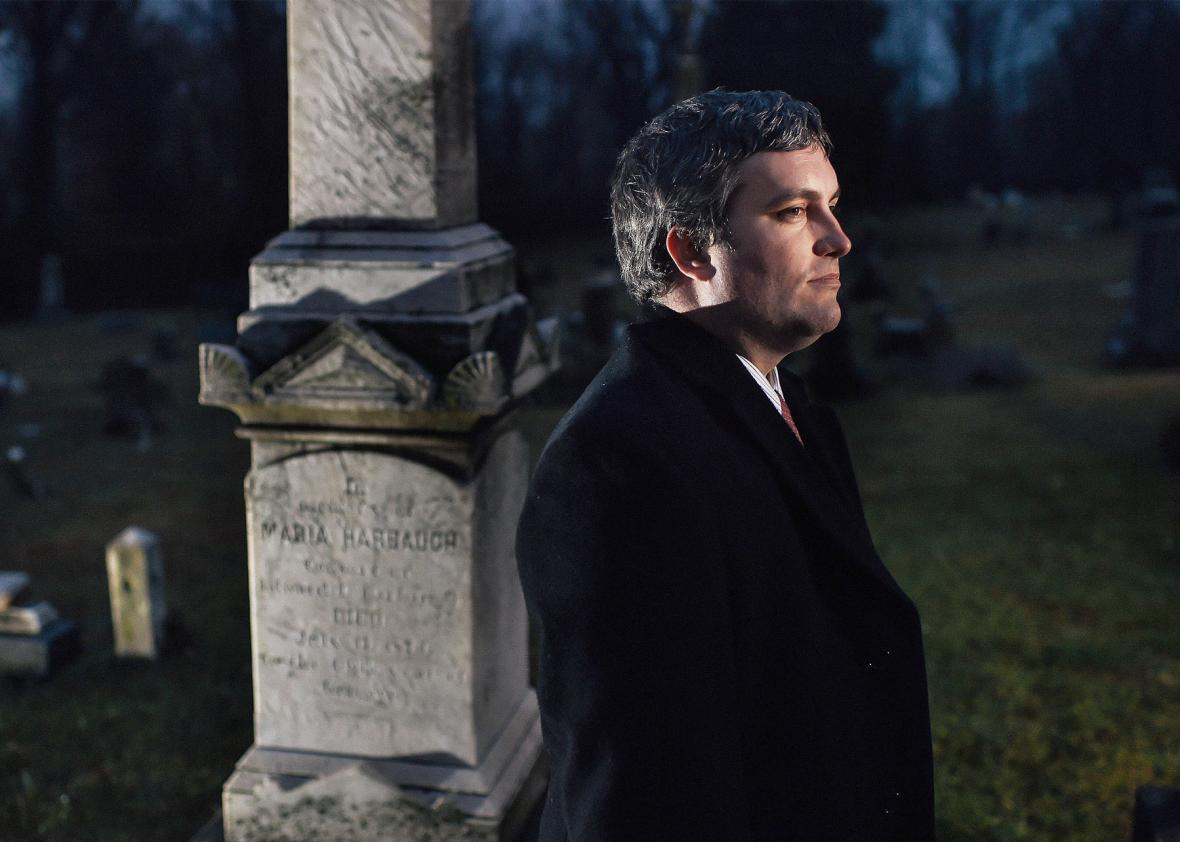Brett Talley, the Alabama lawyer Donald Trump has nominated to be a federal district judge, is a 36-year-old ghosthunter who has never tried a case and who failed to disclose to the Senate that he is married to the chief of staff to the White House counsel. He also seems to have written 16,381 posts—more than 3½ per day—on the University of Alabama fan message board TideFans.com. As BuzzFeed has reported, a user who is almost certainly Talley posted for years under the handle BamainBoston. (BuzzFeed managed to identify him because BamainBoston wrote a message headlined “Washington Post Did A Feature On Me,” linking to a 2014 Ben Terris profile of Talley. BuzzFeed reported that a “Justice Department spokesman declined to comment on Talley’s behalf.”)
A search of TideFans.com reveals that BamainBoston often opined on controversial issues, including race, abortion, perceived federal overreach, and Southern heritage. In one post from February 2011, he defended the honor of the early Ku Klux Klan.
That morning at 9:17 a.m., a user with the handle Bamaro posted a story about a Mississippi proposal “to honor Nathan Bedford Forrest” by placing his image on a license plate. “Who comes up with these ideas?” the user asked. “Honor someone who served as the first KKK Grand Wizard.”
BamainBoston responded an hour later:
Heaven forbid we let the facts get in the way of your righteous indignation, but Forrest, when he decommissioned his men, told them to make peace with the men they had fought and live as good citizens of the United States. It was only after the perceived depredations of the Union army during reconstruction that Forrest joined (it is highly unlikely that he founded or acted as the Grand Wizard) the first KKK, which was entirely different than the KKK of the early 19th Century. When the Klan turned to racial violence, he distanced himself from the organization as he had long supported the reconciliation of the races. In fact, he often spoke to black organizations.
BamainBoston is correct that, following the Confederacy’s surrender, Forrest urged his troops to “obey the laws” of the Union. The remainder of his statement, however, is factually dubious.
First, he omits the 1864 Fort Pillow massacre, when Forrest led his troops to a mass slaughter of black soldiers. It is unclear whether Forrest explicitly permitted the indiscriminate killing, but he later celebrated it, declaring his hope “that these facts will demonstrate to the Northern people that negro soldiers cannot cope with Southerners.”
Second, the allegation that “the first KKK” was “entirely different” from that of “the early 19th Century” does not withstand scrutiny. (BamainBoston almost certainly means “the early 20th century,” since there was no KKK in the early 1800s, and the organization experienced a revival in the early 1900s.) From its inception, the KKK promoted white supremacy and opposed federal efforts to protect the civil rights of freed blacks. The group employed intimidation and violence, including murder, to thwart Reconstruction. It was so effective at disenfranchising black voters through acts of racial terror that, in 1870, Congress passed the Ku Klux Klan Act to enforce the 15th Amendment, which bars race-based voting discrimination. When that proved insufficient, Congress passed a second law permitting the president to suspend habeas corpus to fight the Klan, and allowing individuals to sue state officials who interfered with their constitutional rights.
Contrary to BamainBoston’s assertion, Forrest did likely serve as the KKK’s first leader, or “Grand Wizard,” though the group’s secretive nature makes this charge difficult to prove definitively. In 1868, he described the Klan as “a protective, political, military organization.” He also asserted that he had “no powder to burn killing negroes,” and intended only “to kill the radicals”—that is, Republicans, especially from the North, who supported Reconstruction. However, by this point, the Klan had become notorious for its relentless brutality against freed blacks. Forrest did not disavow the KKK’s terrorism until several years later, when he finally condemned its tactics and expressed more enlightened views.
BamainBoston’s account, then, whitewashes the reality that Forrest’s leadership of the Klan coincided with its early forays into racial violence. It also falsely differentiates “the first KKK” from its later iteration, perpetuating a pernicious myth that the nascent Klan was noble and benevolent.
At the time that BamainBoston wrote this post about Forrest and the KKK, Talley was clerking for Judge Joel Dubina of the U.S. Court of Appeals for the 11th Circuit. Assuming he wrote the post, which seems exceedingly likely, Talley does not seem to have a basic grasp on the history of Reconstruction, which is fundamentally intertwined with the 13th, 14th, and 15th amendments’ expansion of equal rights and suffrage.
Talley has already been voted out of the Senate Judiciary Committee on a party-line vote. If confirmed, he will enjoy a lifetime appointment to interpret a Constitution whose history he does not appear to understand.
Find anything noteworthy in BamainBoston’s message board posts? Email us at tips@slate.com.
Also see:
Trump Judicial Nominee Brett Talley Appears to Have Called Roe v. Wade“Indefensible”
Trump Nominee Brett Talley Appears to Support 20-Year-Old Woman Having Sex with 14-Year-Old Boy
